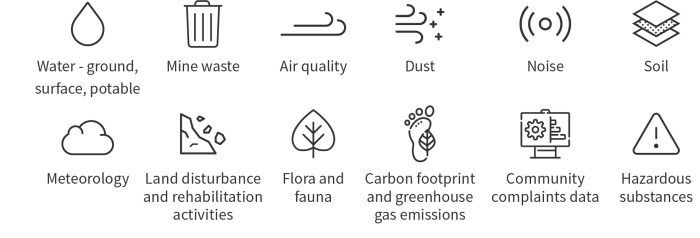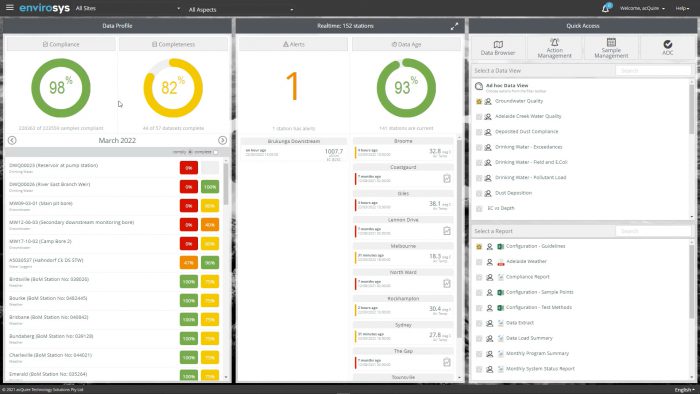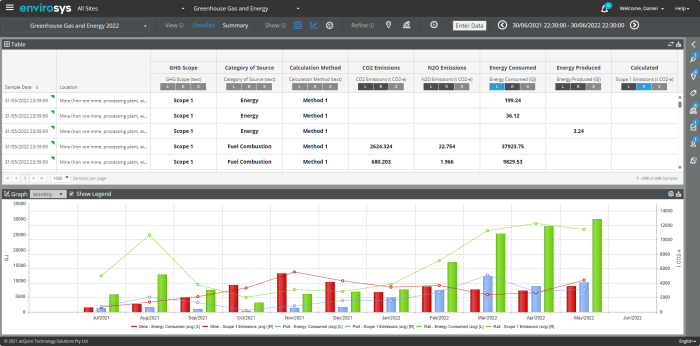Can your environmental data management solution keep up?
As the volume, frequency and type of environmental data continues to grow, and regulatory demands become increasingly intricate, it’s important to assess whether your environmental data management software is ready to withstand the test of time. Environmental professionals need to ensure their software solution is robust and flexible enough to capture, manage and report on any environmental monitoring data, regardless of how and when it comes in.
Why it’s critical to keep up
Failing to keep pace with data and regulatory demands can lead to environmental non-compliance, risking your licence to operate. Having a solution that helps you manage your environmental data so you can make confident decisions around your company’s environmental initiatives is critical to your company’s success, from stakeholder engagement right down to the bottom line.
However, not all environmental data management solutions are created equally. Your company’s data types and formats, monitoring requirements and regulatory needs ultimately determines what you need in a solution, however it’s important to assess your data management processes and ensure your software is ready to support you as your company and data grows.
Here are three fundamental functions that your environmental data management solution should be able to handle to keep up with the evolving demands of environmental data:
1. Capturing all types of environmental monitoring data
Environmental data comes in all types and formats. The complexity and scale of environmental data means your data management solution should be versatile enough to handle data however it comes, whether that’s:
While many traditional environmental data management solutions cater to a specific data type, such as water quality monitoring, these solutions weren’t designed to manage other formats, frequencies or types of data efficiently. If your current system of managing environmental data is a patchwork of different solutions or requires multiple platforms and spreadsheets to manage different types of environmental data, the margin for error increases significantly. Manual handling and incomplete data coverage add further risks.
Your solution should be robust enough to seamlessly capture, manage, and validate all data, including metadata, original observations, and device data, into a single repository. This ensures the consistency, quality and usability of all your environmental data for reporting and decision-making.
2. Support analytical, observational and real-time data
Environmental data collection frequencies can vary from seconds to months. Your solution should be ready to support it when it does come in or alert you if data is missing.
A robust environmental data management solution should cater to both real-time and analytical data equally within a single source of truth, whether it’s coming from the field using a web or offline mobile application, lab, sensors in real-time, observations or other systems.
If you’re relying on multiple software products to manage different frequencies of data coming in, or you’re unable to capture and make decisions based on your environmental data in real time, then it’s time to look at whether there’s a better, all-in-one software solution to support you.
3. Tracking compliance obligations consistently and confidently
Compliance obligations are broad and diverse and require different monitoring conditions and methodologies. Often your reporting turns out to only be as good as the systems you use to capture your environmental data.
A robust environmental data management solution allows you to track and coordinate all activities required to meet sampling, monitoring and reporting obligations so you can put your finger on the state of your compliance in real-time.
A solution with a framework of actions such as alerts, guidelines, limits and triggers that notify users in real-time can transform companies from reacting to failed compliance checks to taking proactive measures to manage compliance status, and the ability to make effective and confident decisions anytime, anywhere.
The value of effective environmental data management
If your environmental data management solution can’t support all the different monitoring types, sources and frequencies, then you’re at risk of leaving data behind, which can affect your data auditability and compliance status.
According to EY, mining and metal companies can mitigate risk and maximise their opportunity when they “extract more insights from data – better decisions start with data”. So, if you’re working with the earth’s natural resources, a robust environmental data management solution like EnviroSys can significantly enhance your decision-making and reporting on environmental targets.
EnviroSys is designed to meet the challenges of environmental data management by providing a single source of truth for all your environmental data – regardless of the type, format or frequency of the data you require to stay compliant.
Are you ready to find an environmental data management solution that does it all? Check out the EnviroSys demo >






